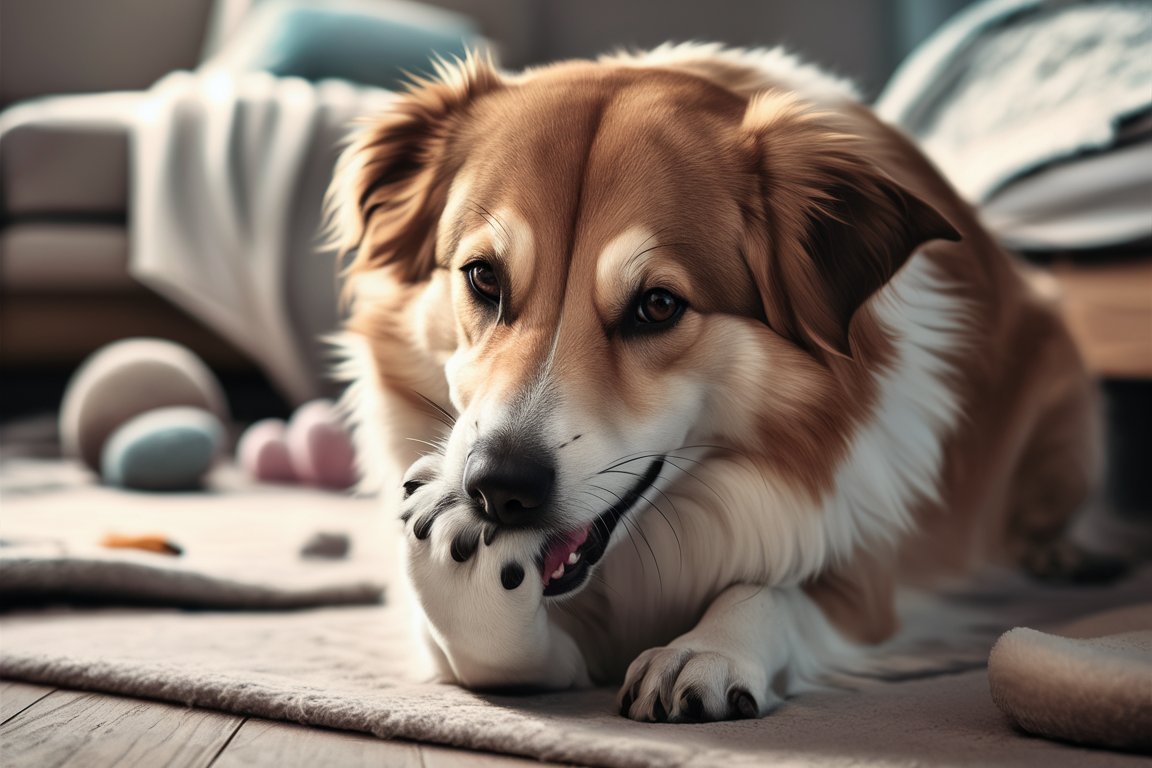Why Is My Dog Biting Their Paws? Understanding and Helping Your Furry Friend
If you’re a dog owner, you’ve probably noticed your furry friend biting their paws at one time or another. While a little nibble here and there might seem harmless, excessive paw biting can be a sign that something’s wrong. But don’t worry! Understanding the reasons behind this behavior and knowing how to address it can help your dog get back to their happy, healthy self.
Why Do Dogs Bite Their Paws?
1. Allergies
One of the most common reasons for paw biting is allergies. Just like humans, dogs can be allergic to a variety of things such as food, pollen, or even the materials used in their bedding. When a dog has an allergic reaction, their skin can become itchy, especially around the paws. This itchiness can drive them to bite and lick their paws in an attempt to find relief.
Anecdote:
My friend Lucy has a Golden Retriever named Max. Every spring, Max would start biting his paws relentlessly. After a trip to the vet, they discovered that Max was allergic to certain types of grass pollen. With the right treatment and some changes in Max’s routine, Lucy was able to help her furry friend feel much better.
2. Parasites
Another reason for dog biting paws could be parasites like fleas or mites. These tiny invaders can cause intense itching, particularly around the paws. If you notice your dog constantly chewing on their feet, it might be time for a flea check.
3. Anxiety and Stress
Just like humans might bite their nails when stressed, dogs can chew their paws as a way to cope with anxiety. Whether it’s due to separation anxiety, boredom, or something in their environment that’s causing stress, paw chewing can become a compulsive behavior.
Anecdote:
My neighbor’s dog, Bella, started biting her paws after they moved to a new house. The change in environment caused Bella a lot of stress, and she developed a habit of chewing on her feet. After settling into a routine and getting more playtime, Bella gradually stopped biting her paws.
4. Injuries or Foreign Objects
Sometimes, a dog might bite their paw if they’ve stepped on something sharp or irritating. It could be a small injury, a splinter, or even a piece of gravel stuck between their toes. Paw biting in this case is an attempt to remove the foreign object or to soothe the pain.
5. Dry Skin
Dry, flaky skin can be uncomfortable for your dog and might lead to excessive paw biting. This can be especially common in colder months or in dry climates where the lack of humidity affects your dog’s skin.
How to Help Your Dog Stop Biting Their Paws: A Step-by-Step Guide
Now that we know some of the reasons why your dog might be biting their paws, let’s talk about how you can help them stop.
Step 1: Identify the Cause
Before you can effectively address the behavior, it’s crucial to determine the root cause. Start by observing your dog closely and consider taking notes:
- When does the paw biting happen?
- Is it seasonal or triggered by certain activities?
- Have there been any recent changes in your dog’s environment?
Step 2: Visit the Vet
If you’re unsure of the cause, or if the paw biting is severe, it’s always a good idea to consult with your vet. They can help diagnose the issue and recommend the best treatment plan, whether it’s medication for allergies, a flea treatment, or advice on managing anxiety.
Step 3: Make Environmental Changes
If allergies are the culprit, you might need to make some changes to your dog’s environment:
- Switch to hypoallergenic dog food.
- Regularly clean their bedding to remove dust and allergens.
- Consider using a humidifier if you live in a dry area.
Step 4: Keep Your Dog’s Paws Clean and Moisturized
Regular grooming can go a long way in preventing paw biting. Make sure to:
- Wipe your dog’s paws after walks to remove any potential irritants.
- Use a dog-friendly moisturizer to keep their paw pads soft and free from cracks.
Step 5: Provide Mental and Physical Stimulation
If anxiety or boredom is causing your dog to chew their paws, increasing their exercise and playtime can help. Interactive toys, puzzle feeders, and regular walks can keep their mind and body engaged, reducing the urge to bite their paws out of stress.
Product Recommendation:
Consider investing in a high-quality paw balm that can soothe irritated skin and prevent dryness. This product is highly recommended for keeping your dog’s paws healthy and comfortable.
Step 6: Address Behavioral Issues
If paw biting has become a compulsive behavior, it may take some time and patience to break the habit. Positive reinforcement, such as rewarding your dog when they stop biting their paws, can be effective. In more severe cases, your vet might recommend behavioral therapy or anxiety medication.
Step 7: Protect the Paws
In some cases, your vet might suggest using an Elizabethan collar (also known as a “cone”) to prevent your dog from biting their paws while they heal. Additionally, you might want to look into dog boots to protect their paws from harsh outdoor conditions, especially if you live in an area with extreme weather.
Conclusion
Paw biting in dogs is a common issue, but it’s important to address it promptly to prevent further complications. By identifying the cause and taking the right steps, you can help your dog find relief and keep their paws healthy. Remember, your dog relies on you to keep them comfortable and safe, so don’t hesitate to seek help if needed.
If you’re looking for products to help manage paw biting, click here to explore our recommended solutions. Your dog deserves the best, and with the right care, they’ll be back to their playful self in no time.

